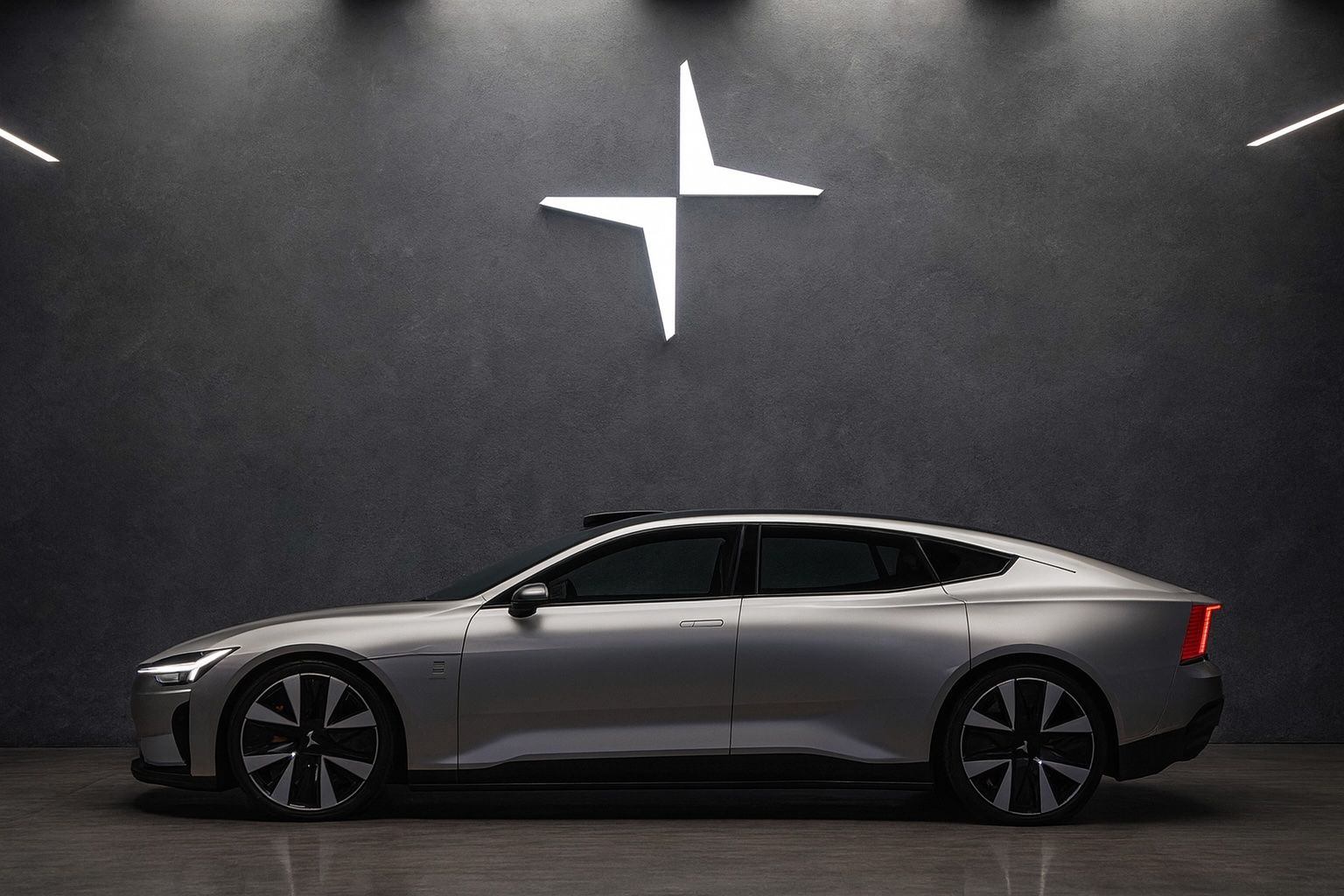- Stock Snapshot: Polestar’s common shares (NASDAQ: PSNY) were trading around $0.94 on Oct 16, 2025 (up ~3% that week) [1]. Remarkably, the lower-priced warrants (PSNYW) exploded to about $0.35 on Oct 16 (≈+76% intraday) [2]. This followed unusually heavy trading; for context, PSNYW nearly tripled (+145%) in late August on similar rallies.
- Q3 Sales Boom: The company reported Q3 2025 retail EV sales of 14,192 cars (a +13% increase vs Q3 2024), bringing year-to-date sales to 44,482 (+36% YTD) [3]. CEO Michael Lohscheller noted that “the third quarter saw continued growth, and we have now sold as many cars as in the whole of 2024” [4], setting the stage for a strong Q4.
- Investor Reaction: Polestar shares jumped on the sales news – Reuters noted PSNY was up ~2% in pre-market trading on Oct. 9 [5]. Simply Wall St. reports the stock rose about 1.05% in the day following the announcement [6], though the 1-year return remains deeply negative (around –34%) [7]. Warrant holders, however, saw huge volatility: PSNYW surged as speculators piled in after the sales beat.
- Tech & Partnerships: Polestar continues upgrading its lineup. In early October Polestar announced the 2026 Polestar 3 now uses an 800-volt electrical system for ultra-fast DC charging (10–80% in ~22 minutes at 350 kW) [8]. In strategic moves, Polestar confirmed its upcoming Polestar 7 SUV (launch ~2028) will be manufactured in Slovakia via Volvo Cars collaboration [9]. On Oct. 14 Polestar also launched a new Fleet Telematics service – a connected software tool giving real-time vehicle data and analytics for EV fleet operators [10]. These initiatives aim to boost future sales and margins.
- EV Market Context: Global EV sales are surging – IEA data show 17 million EVs sold in 2024 (+25% YoY) [11]. China dominates this growth (accounting for nearly two-thirds of EVs sold globally [12]). At the same time competition is heating up: a market analysis notes Polestar’s growth is “slowed amid intensified premium EV competition from Tesla and German automakers” [13]. Trade headwinds (U.S. tariffs) have pushed Polestar to focus on Europe (per Reuters) [14].
- Analyst Outlook: Wall Street remains cautious. MarketBeat reports 3 analysts covering PSNY: consensus “Reduce” (no buys; 2 holds, 1 sell) [15]. The average 12-month price target is about $1.25 [16] (implying ~33% upside from current levels). Simply Wall St. similarly puts a fair value near $1.00 (stock trading below at ~$0.88) [17], suggesting some upside if Polestar can sustain growth. However, persistent losses and cash burn remain risks (Polestar aims for cash-flow break-even by 2025) [18].
Recent Stock Performance
Polestar’s stock has been volatile in October 2025. After Q3 sales news on Oct. 9, PSNY climbed modestly (Reuters noted a ~+2% premarket rise [19]), ending around $0.91 on Oct 15. By Oct 16 it was about $0.94 [20]. In contrast, the PSNYW warrants (which had languished at ~$0.20) saw a huge rally to ~$0.35 on Oct 16 [21]. Such warrant spikes often reflect speculative trading and have no immediate impact on company fundamentals, but they signal intense investor interest. StockAnalysis.com confirms PSNYW’s day gain of +76.6% to $0.36 on Oct 16 [22]. (PSNYW trading is thin and can move wildly.)
Despite the short-term bump, Polestar’s stock is well off its 52-week high (~$1.42) and down sharply over the past year. SimplyWallSt highlights that even after the sales beat, Polestar’s one-year return was –33.98% [23]. Market sentiment remains mixed: retail “buzz” is positive on growth, but many investors note the company still burns cash and faces stiff competition.
Strong Sales Drive Optimism
Polestar’s recent strength stems largely from its robust sales performance. The Oct. 9 BusinessWire/Nasdaq release confirmed Q3 retail sales of 14,192 cars, +13% vs Q3 last year, and 44,482 cars in the first 9 months (+36% YoY) [24]. The CEO’s upbeat comments – “sold as many cars as in the whole of 2024” [25] – underscored momentum. These figures slightly outpaced many global EV peers in percentage terms and showed resilience despite macro pressures.
In response, Polestar said it will publish selected financial results and hold its Q3 analyst call on Nov. 12, 2025 (anticipating continued revenue growth). Investors hope this sales growth translates into revenues and eventually profits. Yet caution remains: Reuters noted Polestar still reported a wider Q2 loss (including a $739M Polestar 3 impairment) and is “pivoting strategically toward Europe” to offset U.S. headwinds [26]. The company has introduced discounts and leasing deals to sustain demand. Overall, analysts see the sales growth as a positive sign, but they await actual earnings and margin improvement in the coming quarters.
New Tech and Partnerships Bolster Future Prospects
Polestar has not sat still on product development. On Oct. 1 it announced the 2026 Polestar 3 will feature an 800-volt electrical architecture (up from 400V), enabling much faster DC charging and higher power. Car and Driver reports the 2026 Polestar 3 can hit 350 kW charge rates (0–80% in ~22 minutes) and boosts its output (the “Performance” dual-motor version jumps to 671 hp) [27] [28]. These upgrades make Polestar’s flagship SUV more competitive on specs. Polestar can also retrofit many improvements to 2025 models, enhancing value for current owners.
On the corporate side, Polestar is forging key partnerships. In July 2025 it signed a deal with Volvo Cars to build the upcoming Polestar 7 SUV in a new Slovakian factory [29]. This European production, using Volvo/Geely platforms, is intended to save costs and tap EU demand. For China, Polestar had already formed a JV in 2023 with tech firm Meizu to tailor its cars to Chinese consumers (integrating custom software). Such moves aim to address Polestar’s weaker presence in China – a huge EV market – and play to its strengths in Europe.
In mid-October Polestar also launched Polestar Fleet Telematics, a connected software service for EV fleet customers. The EV Report notes this system provides real-time vehicle data and usage analytics without extra hardware [30]. It was co-developed with partners like Geotab and Echoes, targeting corporate fleets and mobility providers. By offering advanced fleet management tools, Polestar hopes to capture business buyers (delivery companies, rental fleets) with recurring service revenue. This product innovation is another potential long-term growth driver beyond car sales.
Analysts and Market Outlook
Analysts’ commentary reflects cautious optimism. The latest consensus from 3 Wall Street analysts is neutral-to-bearish: two hold ratings, one sell (no buys) [31]. However, each analyst’s price target is $1.25 [32], implying roughly 30–35% upside from current (~$0.94) levels. This disparity suggests analysts acknowledge Polestar’s growth potential but remain wary of execution and profitability risks. SimplyWallSt also flags that Polestar’s current price (~$0.88 at writing) is below its $1.00 “fair value” estimate [33]. If Polestar can maintain sales momentum and improve margins, some investors see upside.
On the flip side, concerns persist. Polestar still loses money (Net Income –$2.7 B in last 12 months [34]) and faces liquidity challenges. Higher interest rates and chip costs could impact production. Globally, EV markets are shifting: IEA data show global EV sales up 25% in 2024 [35], but growth is slowing in Europe (due to subsidy cuts) and U.S. growth (~25% in 2024) now lags China’s boom [36]. Competitive pressure from Tesla, legacy carmakers, and Chinese EV brands will test Polestar’s strategy [37] [38].
Near-Term and Mid-Term Forecasts
In the near term, investors will watch Polestar’s November 12 earnings call closely. Key focus: revenue growth vs. cost base, and any guidance updates. Polestar has previously targeted roughly 30–35% annual sales volume growth through 2027 [39], which would be robust if achieved. Some analysts expect break-even cash flow by 2025 (a management goal [40]), but have low confidence until tangible results appear. If Polestar hits production and sales targets, the stock could rerate upward. Conversely, if losses widen or guidance is lowered, sentiment could turn sour again.
Longer term, Polestar is betting on expanding its model lineup (Polestar 4 is selling as a smaller SUV, Polestar 6 roadster coming, etc.) and leveraging parent Geely’s scale. An average price target near $1.25 (MarketBeat) or $1.00 (SimplyWallSt) suggests mid-term upside if execution goes well [41] [42]. Ultimately, Polestar’s future hinges on the evolving EV market: continued growth could lift all players, but Polestar must carve out a profitable niche. For now, the recent sales beat and stock rally have caught investors’ attention, rekindling hopes of a turnaround – but only time (and upcoming results) will tell if this momentum lasts.
Sources: Company filings and press releases [43] [44]; news reports (Reuters, Car and Driver, EV Report) [45] [46] [47]; market data and analysis (Investing.com, Simply Wall St, MarketBeat, IEA) [48] [49] [50] [51].
References
1. www.investing.com, 2. www.investing.com, 3. www.nasdaq.com, 4. www.nasdaq.com, 5. www.reuters.com, 6. simplywall.st, 7. simplywall.st, 8. www.caranddriver.com, 9. investors.polestar.com, 10. theevreport.com, 11. www.iea.org, 12. www.iea.org, 13. www.ainvest.com, 14. www.reuters.com, 15. www.marketbeat.com, 16. www.marketbeat.com, 17. simplywall.st, 18. www.investing.com, 19. www.reuters.com, 20. www.investing.com, 21. www.investing.com, 22. stockanalysis.com, 23. simplywall.st, 24. www.nasdaq.com, 25. www.nasdaq.com, 26. www.reuters.com, 27. www.caranddriver.com, 28. www.caranddriver.com, 29. investors.polestar.com, 30. theevreport.com, 31. www.marketbeat.com, 32. www.marketbeat.com, 33. simplywall.st, 34. stockanalysis.com, 35. www.iea.org, 36. www.iea.org, 37. www.ainvest.com, 38. www.ainvest.com, 39. www.investing.com, 40. www.investing.com, 41. www.marketbeat.com, 42. simplywall.st, 43. www.nasdaq.com, 44. investors.polestar.com, 45. www.reuters.com, 46. www.caranddriver.com, 47. theevreport.com, 48. www.investing.com, 49. simplywall.st, 50. www.marketbeat.com, 51. www.iea.org







